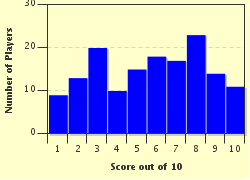Quiz Answer Key and Fun Facts
1. Although the exact date is unknown, Simon de Montfort's year of birth is usually given as being 1208. He was the Earl of which English city?
2. 1215 is one of the most famous dates in English history, being the year in which King John sealed the Magna Carta at Runnymede. Which castle is located close to the site?
3. The foundation stone of which cathedral, renowned for the height of its spire, was laid in 1220?
4. In 1236, Henry III married Eleanor, the daughter of a Count from which region, now a part of France?
5. Bethlem Royal Hospital was founded in 1247 and was the first in the world to specialise in which type of illness?
6. An unusual creature made an appearance in London in 1252, being a gift from King Haakon of Norway. Which of these became part of the menagerie of King Henry III?
7. Pope Clement IV commissioned the writing of the Opus majus, which was sent to him in 1267. Which philosopher and scientist produced this work?
8. Which English king inherited the throne in 1272, beginning a reign in which he spent much time dealing with the country's rebellious neighbours?
9. Although it began earlier the format of 'The Trial of the Pyx' which is still in use in the twenty-first century was established in 1282. What or whom is put on trial?
10. In 1296, the Stone of Scone was forcibly removed from Scotland and brought to London, where it remained for seven hundred years. By what alternative name is it known?
Source: Author
rossian
This quiz was reviewed by FunTrivia editor
gtho4 before going online.
Any errors found in FunTrivia content are routinely corrected through our feedback system.

